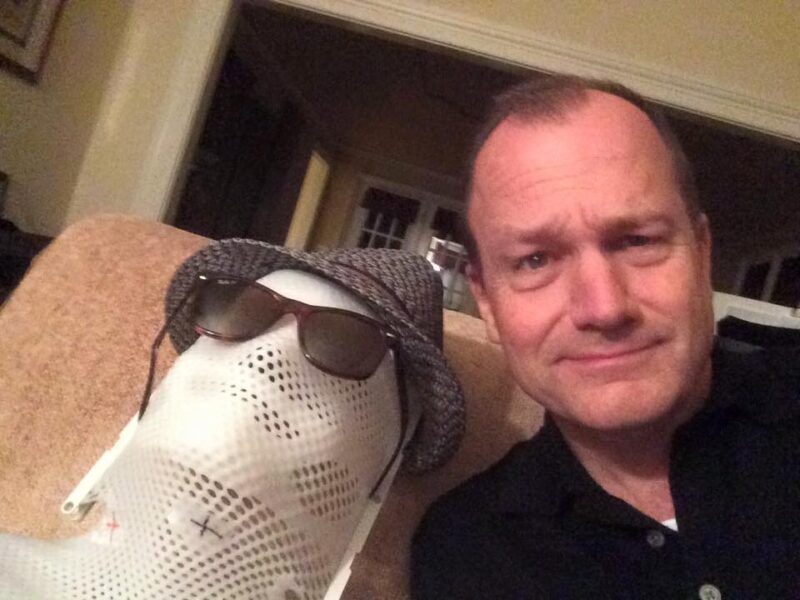
While Practical Mindfulness is in most ways a teaching text, a practical guide to learning a skill, I’ve included some of my own personal narrative in cultivating mindfulness to provide some reinforcement and context. Some of that involves personal preferences on topics like sitting positions and the essential versus lily-gilding aspects of the practice. In these tactical aspects, I favor what works for each individual over some rigid orthodoxy in form.
Take a breath; I mean, figuratively. I get questions on the arcana of which orifices to inhale versus exhale through, which can lead to a tantalizing consideration of suggesting orifices other than the mouth or nose. How many counts for the in-breath, and out, and exactly how many to hold in between? How fast should I count? When the aim is to settle into a letting go of conceptual rule adherence and just attending to something, simple and reproducible is the routine that you’ll stick to and trust in. The breath is all that – so we start there, and we return there often.
But, what if the breath is a problem? Not halitosis, mind you, but say, asthma, or nasal congestion, or some weirder obstacle to tending to the breath (heh, foreshadowing)? In PM we walk through approaches to attending to everything and anything in our field of experience – interior somatic states, emotions, and thoughts; exterior observations from our senses, our own awareness capacity as it operates, and, in a more complicated and speculative way, the felt sense of deeper belonging as it may arise. It’s all in the cosmic ballpark.
But when the most familiar “home” of the breath to return to is a problem, then I usually move to Plan B: my heartbeat. It’s also always there (fingers crossed!); and by nature calms down when attended to. I recognize that those with arrhythmias and palpitation issues may find using the heartbeat as an anchor more anxiety-inducing than calming. Follow your heart on that one.
One riveting, personal example of heartbeat observation involved the necessities of a whiz-bang flavor of radiation therapy I underwent in 2015, called “stereotactic radiosurgery.” It directs specific, intense radiation at an exacting, three-dimensional volume of tumor, while limiting damage to the surrounding real estate. It was good fit for my small but aggressive goober, which since 2010 has taken up residence in a tenuous spot, approaching but not yet strangling my cervical (neck) spinal cord.
The kind of accuracy called for requires some serious, software-driven planning and execution, starting with a 3-D printing of tumor from not tumor, via a mega-MRI (a little under two hours) before the Chernobyl chaser. Any extra bodily movement during that extended “playing dead” act could impact the accuracy of that resultant three-dimensional computer model, and thus could affect where Dr. Strangelove would later direct the death beam. So stillness was an ideal.
In the MRI sarcophagus, I reflexively controlled my breathing to calm my base anxiety about the tight space, marathon length of imaging, and tension about my possible role in messing up the images. Yet focusing on my respiration—my rib case being the one part of me I had to move—was ironically raising my anxiety. My aspiration to control my inspiration and expiration was generating desperation and perspiration. I ran narratives about the degree of 3-D error I might be causing with any excess movement. Of course, that only inspired me (hah!) to take deep breaths to calm down, and risk further movement.
So, a different kind of inspiration was in order: I moved off watching the breath and moved to my heartbeat. This was made easier by the candy-colored earplugs provided to reduce the cacophony of nuclear-plant-evacuation-style buzzing and gnome-hammer-banging familiar to anyone who has undergone MRI imaging. I watched my heartbeat, with some checks out to body-sense (mostly, achy back on that rock-hard gurney).
The MRI completed, the number crunching for the bespoke programming of a truly amazing technology could commence to target the tumor. Nothing is left to chance; a good securing was provided, my head and shoulders literally bolted to the treatment table courtesy of a breathable, hard plastic mesh apparatus custom-made for me (it’s in the photo above). I’ve since considered promoting it as a piece of modern art – “Hannibal Lecter goes to Fencing school”.
A weird circumstance to practice; I don’t really recommend it. But, yes, any moment can be a moment to engage in meditation, here using the heartbeat. Gratitude of having the good fortune of access to this truly bizarre but possibly life-saving event joined me with each beat.
Take Care of yourself and each other. GCS